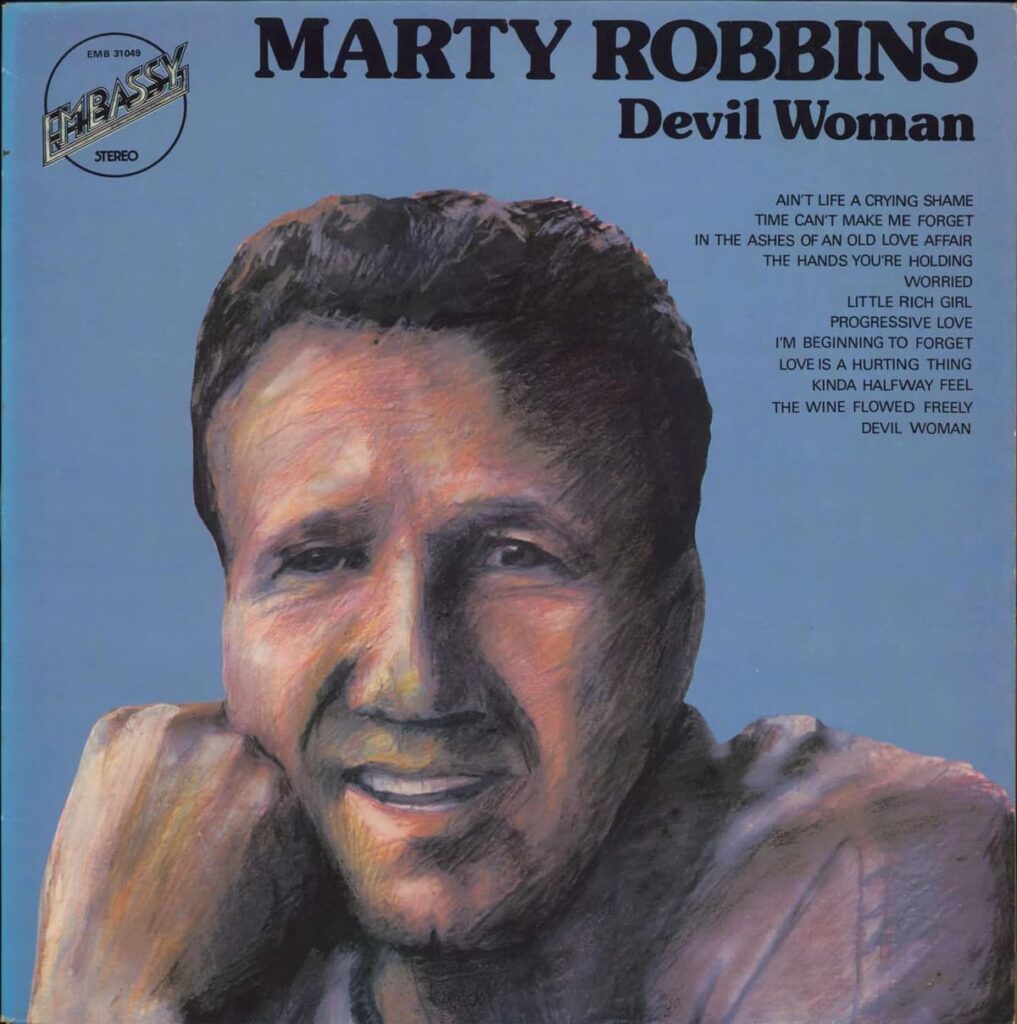
Marty Robbins’ “Don’t Worry”: The Accidental Fuzz That Changed Music and the Timeless Balm for a Broken Heart
There are songs that simply exist, and then there are those that mark a definitive point in time—not just for the artist, but for the entire sonic landscape. Marty Robbins‘ 1961 classic, “Don’t Worry,” falls squarely into the latter, boasting a chart legacy and an accidental technical marvel that still sparks conversation among music aficionados today. For those of us who remember those heady days of the early sixties, the song is a beautiful contradiction: a gentle, world-weary country ballad that unintentionally birthed one of the foundational sounds of rock and roll.
This wasn’t just a Country & Western hit; it was a phenomenon. Released in February 1961 as a single, the song quickly ascended to the pinnacle of success, becoming Robbins‘ seventh number one on the Billboard Hot Country Songs chart, where it held the top spot for a formidable ten weeks. Crucially, it was a major crossover success, soaring up the pop charts to peak at an impressive Number 3 on the Billboard Hot 100. This crossover appeal reaffirmed Robbins‘ unique versatility, placing him alongside the biggest names in American music and confirming his status not just as a Western balladeer, but as a genuine pop star whose smooth, distinctive voice could charm any radio dial.
The most famous—and perhaps the most enduring—story surrounding “Don’t Worry” centers on its revolutionary sound. During the recording session in Nashville’s Bradley Studio B, session guitarist Grady Martin plugged his Danelectro six-string bass into a faulty channel on the mixing desk. The result, heard during the instrumental break and the brief reprise, was a shockingly distorted, abrasive, and fuzzy tone. In 1961, this “fuzz” was a mistake—a malfunction, not a creative choice. The engineers and Martin himself were reportedly keen to re-record the part, but Marty Robbins and his producer, Don Law, were convinced of its uniqueness and impact. They decided to keep the accidental distortion. This moment of studio serendipity is widely credited with inspiring the commercial production of the Maestro FZ-1 Fuzz-Tone, one of the very first dedicated guitar effects pedals, forever changing the course of electric guitar tone in rock, pop, and blues music. It is a stunning piece of trivia: a heartbreak ballad by a country star is the genesis point for the sonic snarl of countless rock anthems to follow.
Beyond the technical novelty, the emotional core of “Don’t Worry” is what made it resonate so deeply with listeners, especially with an older audience who understood the quiet dignity of painful endings. The lyrics, written by Marty Robbins himself, deliver a tender and mature farewell. It is the voice of the one being left behind, yet instead of anger or bitterness, he offers a selfless, gentle benediction:
“Don’t worry ’bout me, it’s all over now Though I may be blue, I’ll manage somehow.”
This is the very soul of forbearance. The singer isn’t denying the hurt (“I may be blue”), but he elevates his love above his pain, instructing his former lover to not carry the burden of his sorrow. He tells her, in the simplest, most profound terms, to be happy—to be “as happy as I when you loved me.” It’s an expression of deep, true love that transcends possession. For a generation raised on stoicism and quiet sacrifice, this message spoke volumes, echoing the noble sentiment that true love ultimately wishes happiness for the beloved, even if it’s with someone else. The song offers a catharsis, a permission slip to grieve quietly while letting the other person walk away unburdened by guilt.
Listening to Robbins’ smooth, almost conversational delivery over the classic ‘Nashville Sound’ backing—before that brief, shocking burst of accidental fuzz—is like sitting with an old, trusted friend who assures you that everything, eventually, will be alright. It’s a testament to the enduring power of a simple, heartfelt lyric delivered by a master craftsman.